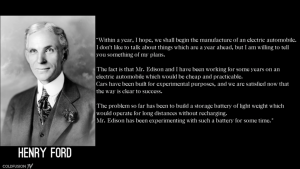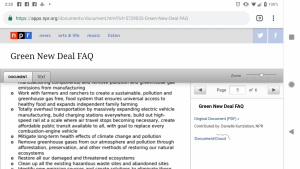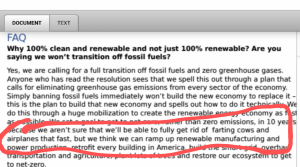- 70,049
- 24,223
- Joined
- Aug 1, 2004
Green New Deal: Build Enough ‘High-Speed Rail‘ to Make Air Travel Unnecessary
Tweet Share Share
By Caroline Biscotti on February 7, 2019
An outline of the “Green New Deal” shows progressive Democrats hope to expand high-speed rail transportation across the United States to “a scale where air travel stops becoming necessary.”
The proposal — championed by freshman congresswoman Rep. Alexandria Ocasio-Cortez (D-NY) and Sen. Ed Markey (D-MA) — calls for the federal government to tackle “climate change” and “systemic injustice” by eliminating “pollution and greenhouse gas emissions” to meet “100 percent of the power demand” through “clean, renewable, and zero-emission energy sources.”
The plan outlines 14 different proposed “infrastructure and industrial” projects to meet its objective to “totally overhaul” transportation in the U.S.
“Every project strives to remove greenhouse gas emissions and pollution from every sector of our economy” by “massively expanding electric vehicle manufacturing, build charging stations everywhere, build out highspeed rail at a scale where air travel stops becoming necessary,” the reads.
It also calls for the government to “create affordable public transit available to all, with [the] goal to replace every combustion-engine vehicle.”
Speaking at a press conference Thursday, Markey the proposal “the greatest blue-collar job creation program in a generation,” before adding “Our energy future will not be found in the dark of a mine, but in the light of the sun.”
The proposal’s unveiling came after House Speaker Nancy Pelosi (D-CA) released a list of the eight Democrats who will serve on a select climate change committee.
Ocasio-Cortez was not chosen for the panel in what is widely regarded as a snub. On Wednesday, Pelosi threw shade on the Green New Deal, noting that despite the plan’s sparseness on details, numerous Democrats have said they support it.
“It will be one of several or maybe many suggestions that we receive,” Pelosi Politico on whether the climate change panel will write legislation around the Green New Deal. “The green dream or whatever they call it, nobody knows what it is, but they’re for it, right?”
https://prestonbusinessreview.com/g...d-rail-to-make-air-travel-unnecessary/101004/
 broad buggin.
broad buggin.
Tweet Share Share
By Caroline Biscotti on February 7, 2019
An outline of the “Green New Deal” shows progressive Democrats hope to expand high-speed rail transportation across the United States to “a scale where air travel stops becoming necessary.”
The proposal — championed by freshman congresswoman Rep. Alexandria Ocasio-Cortez (D-NY) and Sen. Ed Markey (D-MA) — calls for the federal government to tackle “climate change” and “systemic injustice” by eliminating “pollution and greenhouse gas emissions” to meet “100 percent of the power demand” through “clean, renewable, and zero-emission energy sources.”
The plan outlines 14 different proposed “infrastructure and industrial” projects to meet its objective to “totally overhaul” transportation in the U.S.
“Every project strives to remove greenhouse gas emissions and pollution from every sector of our economy” by “massively expanding electric vehicle manufacturing, build charging stations everywhere, build out highspeed rail at a scale where air travel stops becoming necessary,” the reads.
It also calls for the government to “create affordable public transit available to all, with [the] goal to replace every combustion-engine vehicle.”
Speaking at a press conference Thursday, Markey the proposal “the greatest blue-collar job creation program in a generation,” before adding “Our energy future will not be found in the dark of a mine, but in the light of the sun.”
The proposal’s unveiling came after House Speaker Nancy Pelosi (D-CA) released a list of the eight Democrats who will serve on a select climate change committee.
Ocasio-Cortez was not chosen for the panel in what is widely regarded as a snub. On Wednesday, Pelosi threw shade on the Green New Deal, noting that despite the plan’s sparseness on details, numerous Democrats have said they support it.
“It will be one of several or maybe many suggestions that we receive,” Pelosi Politico on whether the climate change panel will write legislation around the Green New Deal. “The green dream or whatever they call it, nobody knows what it is, but they’re for it, right?”
https://prestonbusinessreview.com/g...d-rail-to-make-air-travel-unnecessary/101004/
 broad buggin.
broad buggin.









